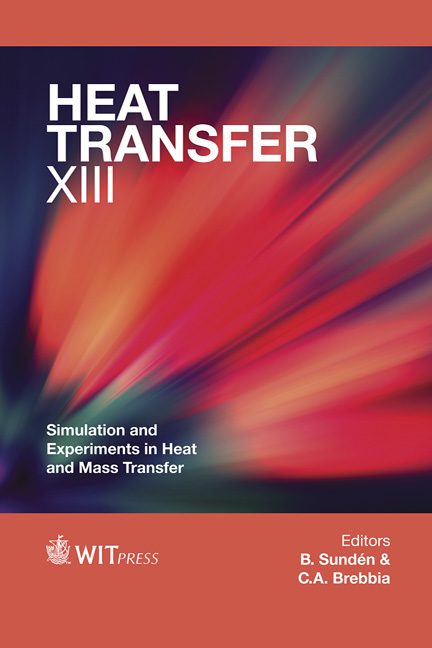Modelling Of The Thermal Behaviour Of Heat Pipes
Price
Free (open access)
Transaction
Volume
83
Pages
13
Page Range
377 - 389
Published
2014
Size
561 kb
Paper DOI
10.2495/HT140331
Copyright
WIT Press
Author(s)
B. Fadhl, L. C. Wrobel & H. Jouhara
Abstract
Interest in the use of heat pipe technology for heat recovery and energy saving in a vast range of engineering applications has been on the rise in recent years. Heat pipes are playing a more important role in many industrial applications, particularly in improving the thermal performance of heat exchangers and increasing energy savings in applications with commercial use. In this paper, a comprehensive CFD modelling was built to simulate the details of the two-phase flow and heat transfer phenomena during the operation of a wickless heat pipe or thermosyphon, that otherwise could not be visualised by empirical or experimental work. Water was used as the working fluid. The volume of the fluid (VOF) model in ANSYS FLUENT was used for the simulation. The evaporation, condensation and phase change processes in a thermosyphon were dealt with by adding a user-defined function (UDF) to the FLUENT code. The simulation results were compared with experimental measurements at the same condition. The simulation was successful in reproducing the heat and mass transfer processes in a thermosyphon. Good agreement was observed between CFD predicted temperature profiles and experimental temperature data. Keywords: thermosyphon, computational fluid dynamics (CFD), multiphase flow, phase change material, evaporation, condensation.
Keywords
thermosyphon, computational fluid dynamics (CFD), multiphase flow, phase change material, evaporation, condensation.





